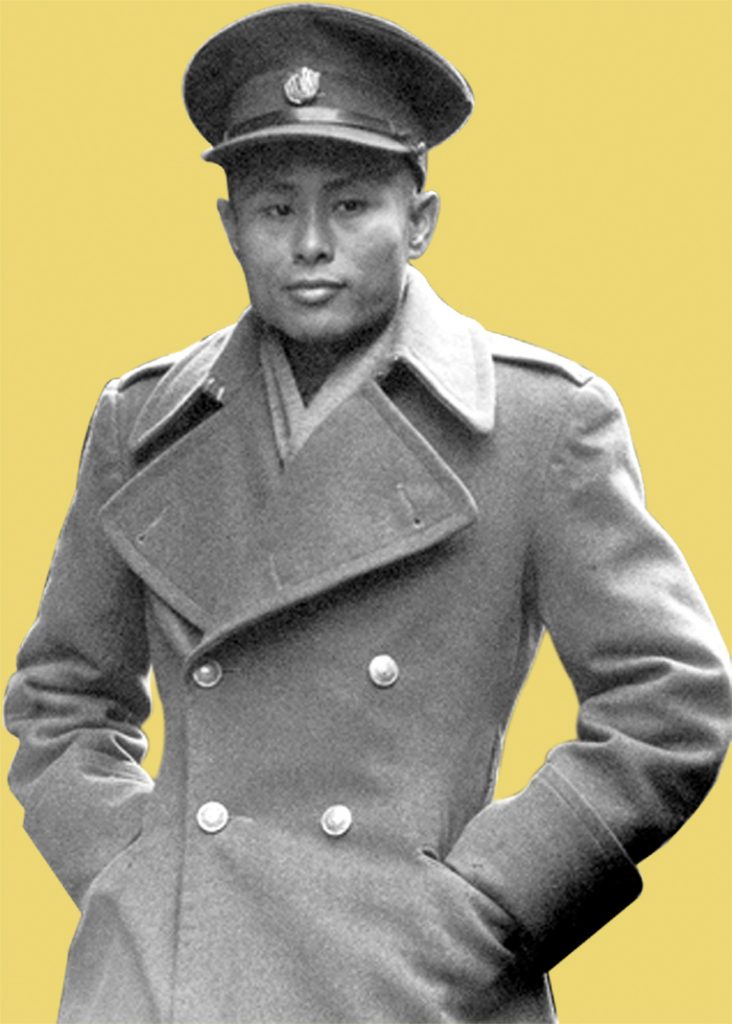17 July
The leaders who possess great leadership qualities effectively channelize their energy and devote themselves for the growth and progress of humanity. General Aung San proved to be a leader of such kind in the endeavour of achieving independence of Burma(Myanmar).
General Aung San had turned out to be the ideal leader of Burma(Myanmar) since his trip to Japan with his comrades, Thakin Aye Maung of Myenigon, Thakin Ba Gyan of Minbu, Ko Tun Shien of the Universtiy Students Union and Thakin Let Ya to be trained in military camps in Japan. In an article written by Bo Let Ya describing Aung San’s leaderships during the trip. He said Aung San seemed to have accomplished much Japan, and the relations he established with friends there had been beyond expectations. According to Bo Let Ya, he could not have accomplished that much by his human relations but his integrity and patriotism must have evoked the friendly and favourable responses. On the way, he said Aung San played host to all them, and at meals he would teach them how to eat the raw fish, how to take the soup with the sea-weed. He was the expert as well as the host, and he never tired of trying to make them feel at home. He would often ask Tun Shein, who sang well, to sing the songs of love that U Ba Nyunt and Dora Than Aye had made popular. Sometimes he would get into the mood and join in the singing against their protests. Aung San, after all, was a human. He responded with sensitivity to the many moods of man. When he felt happy he must sing, and nobody could stop him. We see at this point Aung San knew exactly how to motivate his comrades and made happiness and satisfaction for them.
During the training in Japan, Bo Let Ya emphasized that Aung San shared with his comrades all the hardships of the trainings and the anguish of their doubts and suspicions, but he kept a stout heart and gave heart to them all. He was not one to shirk in his work, he did not plead aches and pains to excuse himself. We believe he shared the hardships with his teams because he wanted to show he was one of them and the way he gave heart to them means he was there for them.
While planning, in map-fighting exercises, the strategy for the invasion of Burma, when the Japanese asked Aung San to suggest the name of a Burmese leader who should be appointed chief administrator after the occupation, Aung San replied without hesitation that Dr Ba Maw was the man. They had discussed the question among themselves and agreed on the choice. Bo Let Ya admitted that it was on political manoeuvre on their part and they did sincerely believe that Dr Ba Maw was a good leader and that he could work with the younger leaders, and lead a great team.
General Aung San showed his ideal leadership in uniting Burma(Myanmar). Panlong was not smooth going all along. No one but Aung San could do such a thing as people believe him to follow his leadership. According to a Chin leader, U Vum Ko Hau, he said they met Bogyoke Aung San for the first time but his reputation as an honest and dedicated leader had reached the hills. When they met him and heard him, they found more than sufficient confirmation for the good reports of him. What specially impressed them was his honesty, he wrote. He was not free with promises; he did not use sweet flattery or cunning diplomacy. When he gave a word, he knew it was as good as or better than written agreements, signed and sealed. The following is from a speech that U Aung San gave at a gathering of leaders from the frontier areas on the 11th February,1947, at Panglong in the Shan State.
“I am the youngest delegate here even though my office gives me precedence. The dream of a unified and free Burma has always haunted me and these last ten years I have been actively pursuing it. We who are gathered here tonight are engaged in the pursuit of the same dream. There is this thing called “racism” that I want to talk about. In the past we shouted slogans: ‘our race, our religion, our Language!’ Those slogans have gone obsolete now. What is race, after all. What are its tests? We have in Burma many indigenous peoples: the Karens, the Kachins, the Shans, the Chins, the Burmese and others. In other countries, too there are many indigenous peoples, many “races”. China, Japan, and the Soviet Union provide examples. In America, though the peoples may speak a common language, they spring from many stocks; there are the British, the Italians and other peoples, but they have become assimilated, and they identify themselves as Americans.” We think that these wordings are indicative of how to understand the ideal leadership to all of us.
In addition, Bogyoke Aung San is a genuine nationalist leader of Myanmar. We always remember his ideal leadership. Then we should not only remember Bogyoke Aung San but also follow his ideal leadership and sacrifices for the country.
Reference
-Aung San of Burma(Myanmar) Compiled and Edited by Maung Maung, 2nd Edition, 2011
(Dr.Than Lwin Tun, May Thazin, Honey Soe)



